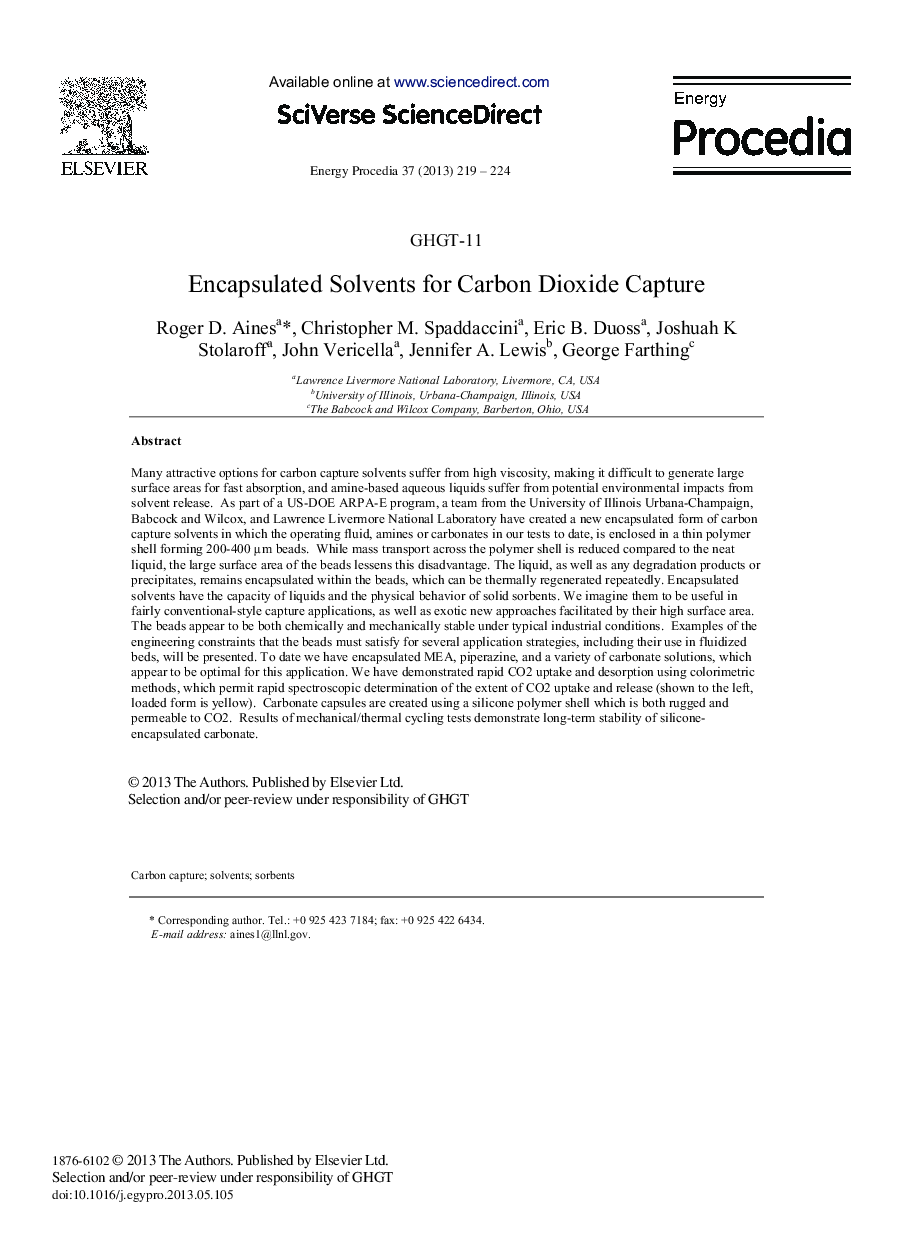| کد مقاله | کد نشریه | سال انتشار | مقاله انگلیسی | نسخه تمام متن |
|---|---|---|---|---|
| 1512818 | 1511198 | 2013 | 6 صفحه PDF | دانلود رایگان |

Many attractive options for carbon capture solvents suffer from high viscosity, making it difficult to generate large surface areas for fast absorption, and amine-based aqueous liquids suffer from potential environmental impacts from solvent release. As part of a US-DOE ARPA-E program, a team from the University of Illinois Urbana-Champaign, Babcock and Wilcox, and Lawrence Livermore National Laboratory have created a new encapsulated form of carbon capture solvents in which the operating fluid, amines or carbonates in our tests to date, is enclosed in a thin polymer shell forming 200-400 μm beads. While mass transport across the polymer shell is reduced compared to the neat liquid, the large surface area of the beads lessens this disadvantage. The liquid, as well as any degradation products or precipitates, remains encapsulated within the beads, which can be thermally regenerated repeatedly. Encapsulated solvents have the capacity of liquids and the physical behavior of solid sorbents. We imagine them to be useful in fairly conventional-style capture applications, as well as exotic new approaches facilitated by their high surface area. The beads appear to be both chemically and mechanically stable under typical industrial conditions. Examples of the engineering constraints that the beads must satisfy for several application strategies, including their use in fluidized beds, will be presented. To date we have encapsulated MEA, piperazine, and a variety of carbonate solutions, which appear to be optimal for this application. We have demonstrated rapid CO2 uptake and desorption using colorimetric methods, which permit rapid spectroscopic determination of the extent of CO2 uptake and release (shown to the left, loaded form is yellow). Carbonate capsules are created using a silicone polymer shell which is both rugged and permeable to CO2. Results of mechanical/thermal cycling tests demonstrate long-term stability of silicone- encapsulated carbonate.
Journal: Energy Procedia - Volume 37, 2013, Pages 219-224